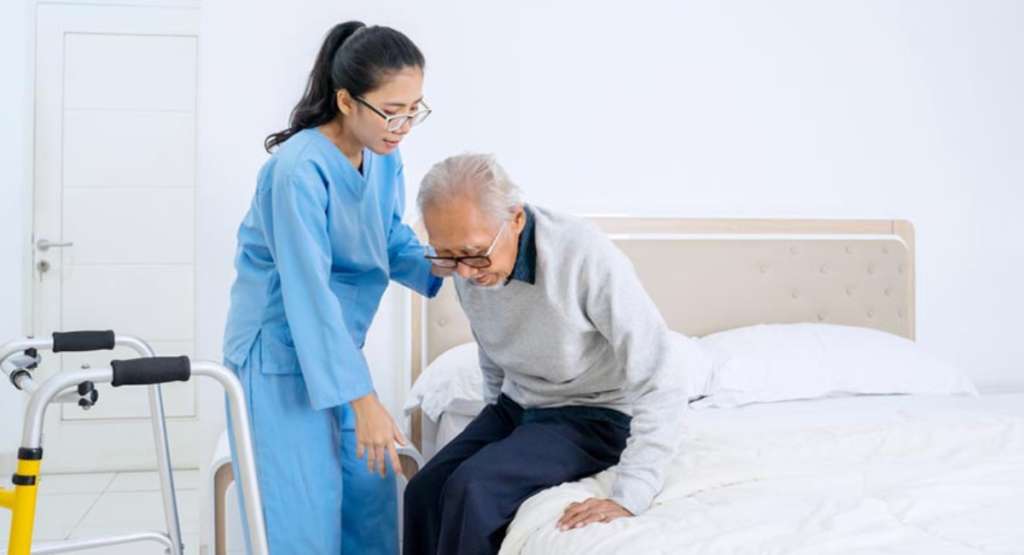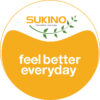Experiencing a stroke is a life-altering event that necessitates a focused and rapid approach to recovery. Understanding what a stroke is and how to recover from stroke quickly is crucial for optimizing outcomes and regaining a fulfilling quality of life. In this blog, we explore nine speedy steps that individuals can incorporate into their recovery journey. From immediate post-stroke care to long-term rehabilitation strategies, these steps encompass a holistic approach to expedite recovery.
What is a Stroke?
A stroke, often referred to as a “brain attack,” occurs when there is a sudden interruption of blood flow to the brain or when a blood vessel in the brain bursts. This disruption deprives brain cells of oxygen and nutrients, leading to rapid cell death. Strokes manifest in various ways, with symptoms such as sudden numbness, confusion, difficulty speaking, severe headaches, or impaired coordination. Immediate medical attention is crucial, as timely intervention can minimize damage and enhance the chances of recovery. Stroke awareness and preventive measures, including lifestyle changes and managing risk factors, are essential in reducing the incidence of this potentially debilitating condition. Lets now delve into and get answers for how to recover from stroke quickly.
9 Speedy Steps to Recover From Stroke
If wondering how to recover from stroke quickly, it can be quite challenging, but with determination and strategic approaches, the path to swift rehabilitation becomes clearer. These are the 9 steps that help you recover from stroke effectively and much faster:
1. Seek Immediate Medical Attention:
The critical importance of seeking immediate medical attention cannot be overstated when it comes on how to recover from stroke quickly. Timely intervention is paramount in minimizing damage to the brain and improving overall outcomes. Recognizing and acting upon the signs of a stroke, such as sudden numbness, confusion, difficulty speaking, or severe headaches, can significantly increase the likelihood of a swift and successful recovery. Upon reaching the hospital, medical professionals may administer clot-busting medications or perform procedures to restore blood flow to the brain, depending on the type of stroke. This immediate and decisive action sets the stage for a more expedited recovery journey.
2. Embrace Physical and Occupational Therapy:
Physical and occupational therapy are cornerstones of stroke rehabilitation, offering targeted interventions to enhance mobility, strength, and coordination. Engaging with skilled therapists who specialize in stroke recovery allows individuals to embark on a tailored exercise regimen that addresses specific challenges. These therapeutic interventions play a crucial role in restoring functionality, expediting recovery, and promoting independence in daily activities. Physical therapy focuses on improving motor skills, balance, and strength, while occupational therapy addresses challenges related to daily tasks, such as dressing, eating, and bathing. By actively participating in these therapies, individuals can accelerate their journey toward regaining a sense of normalcy in their lives.
3. Establish a Support System:
The emotional toll of a stroke is undeniable, making the establishment of a robust support system imperative. This network, comprising family, friends, and healthcare professionals, plays a pivotal role in providing emotional support, encouragement, and understanding throughout the recovery process. Regular communication with this support system can contribute significantly to mental well-being, fostering resilience and determination. Support groups specifically tailored for stroke survivors offer a platform for individuals to share experiences, exchange advice, and celebrate milestones. The collective strength of a supportive community can alleviate feelings of isolation, providing motivation and inspiration for a quicker and more sustained recovery.
4. Follow a Well-Balanced Diet:
Nutrition is a fundamental pillar of stroke recovery, influencing the healing process and overall well-being. A well-balanced diet rich in essential nutrients supports brain health and aids in the repair of damaged tissues. Fruits, vegetables, lean proteins, and whole grains should be prioritized, and consulting with a nutritionist can help create a personalized meal plan that aligns with individual needs. In addition to addressing physical health, a nutritious diet can also contribute to better energy levels and mental clarity. By nourishing the body with the right nutrients, individuals can create an optimal environment for healing and expedite the recovery process.
5. Stay Consistent with Medications:
Medical management is often an integral component of stroke recovery, with prescribed medications playing a crucial role in preventing complications and managing underlying conditions. Adhering to the prescribed medication regimen consistently is essential for maintaining overall health and supporting the recovery process. Blood thinners, antiplatelets, and other medications may be prescribed to address specific risk factors and optimize cardiovascular health. Regular check-ups with healthcare professionals ensure that the medication plan remains effective and can be adjusted as needed, contributing to a smoother and more accelerated recovery trajectory.
6. Engage in Regular Physical Exercise:
Physical exercise is a key factor in regaining strength, flexibility, and balance after a stroke. Collaborating with healthcare professionals to develop a personalized exercise program tailored to individual needs and limitations is crucial. Activities such as walking, swimming, and gentle stretching can enhance circulation, reduce muscle stiffness, and expedite the recovery process. Consistency is key when it comes to physical exercise. Integrating regular activities into daily life promotes ongoing progress and contributes to long-term recovery goals. The guidance of healthcare professionals ensures that exercises are safe and effective, aligning with the individual’s current capabilities and future aspirations.
7. Stimulate Cognitive Function:
Cognitive rehabilitation is vital for addressing challenges related to memory, attention, and problem-solving that may arise after a stroke. Engaging in activities that stimulate cognitive function, such as puzzles, memory games, and reading, can contribute to a more comprehensive recovery. Cognitive therapy programs, led by professionals experienced in stroke rehabilitation, provide structured approaches to enhance mental acuity and support the rebuilding of cognitive skills. By actively participating in these programs, individuals can optimize their cognitive recovery and expedite the restoration of daily functioning.
8. Focus on Restorative Sleep:
Quality sleep is a fundamental component of overall health and recovery. Stroke survivors may encounter disruptions in their sleep patterns, making it essential to prioritize restorative sleep. Establishing a consistent sleep routine, creating a comfortable sleep environment, and addressing any issues affecting sleep quality are crucial steps in supporting the healing process. Adequate sleep contributes to physical and mental well-being, facilitating the body’s natural repair mechanisms. By placing emphasis on restorative sleep, individuals can optimize the conditions for recovery, including improved mood, concentration, and overall vitality.
9. Stay Positive and Motivated:
A positive mindset can significantly influence the speed and success of stroke recovery. Celebrating small victories, setting realistic goals, and maintaining motivation throughout the rehabilitation process are essential for a positive outlook. Joining support groups, connecting with other stroke survivors, and sharing experiences create a sense of community and encouragement. Acknowledging progress, no matter how small, contributes to a sense of achievement and boosts self-confidence. Integrating positivity into the recovery journey fosters resilience, enhances motivation, and ultimately contributes to a quicker and more successful recovery.
Conclusion
By now it would be clear on how to recover from stroke quickly, which requires a holistic approach that addresses physical, emotional, and cognitive aspects of well-being. By following these nine speedy steps – seeking immediate medical attention, embracing therapy, establishing a support system, maintaining a balanced diet, staying consistent with medications, engaging in regular exercise, stimulating cognitive function, prioritizing restorative sleep, and maintaining a positive mindset – you can enhance your chances of a swift and effective recovery. Always consult with your healthcare team for personalized advice and guidance tailored to your specific needs and circumstances. With determination, support, and the right strategies, a quicker recovery from a stroke is not only possible but achievable.
We are India’s first comprehensive continuum care provider. We provide multidisciplinary out of hospital care to acute and post-acute and chronically ill patients at our critical care facilities and your home.


